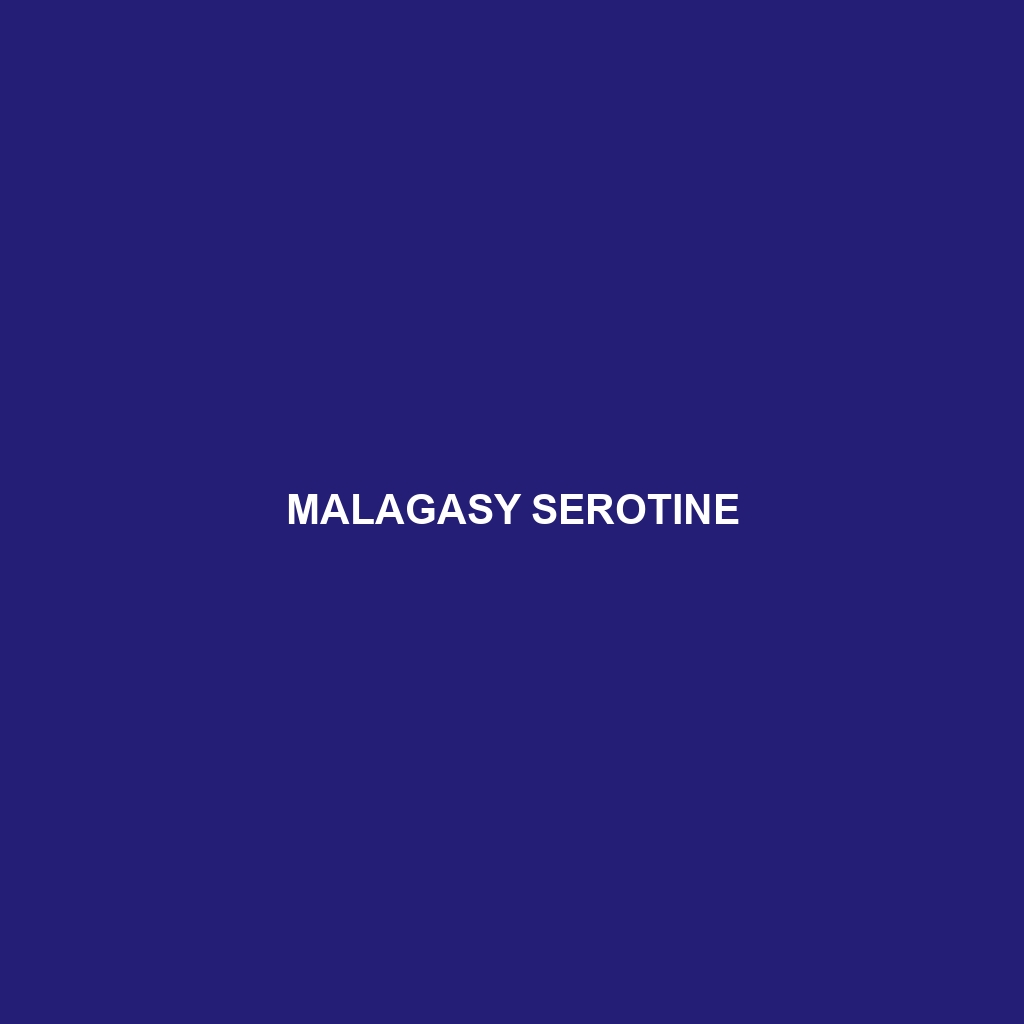Malagasy Serotine (Scientific Name: )
Common Name: Malagasy Serotine
Scientific Name:
Habitat
The Malagasy Serotine is primarily found in the unique ecosystems of Madagascar, particularly in forested areas, including both tropical rainforests and dry deciduous forests. These bats tend to inhabit regions with abundant vegetation, where they can roost in tree cavities or among foliage. Their geographic range is largely confined to various locales across the island, making them endemic to Madagascar.
Physical Characteristics
The Malagasy Serotine typically measures between 10 to 12 centimeters in body length, with a wingspan that can reach up to 30 centimeters. Its fur is typically a rich brown color with lighter underparts, providing effective camouflage against tree bark. One distinctive feature is its large, rounded ears and long, narrow snout, which are well-adapted for navigation in dense vegetation. Their eyes are relatively large, aiding in nocturnal activities.
Behavior
The Malagasy Serotine exhibits fascinating behaviors, particularly during foraging at dusk and dawn. These bats are known for their agility and are frequently observed flying in swift, erratic patterns to catch insects mid-air. They are social animals, often roosting in groups, and display communal grooming behaviors that strengthen social bonds.
Diet
As insectivorous creatures, the Malagasy Serotine primarily feeds on a diverse range of insects, including moths, beetles, and flies. Their diet can vary seasonally based on the availability of prey, and they play a crucial role in controlling insect populations within their habitat, making them vital to the ecological balance.
Reproduction
Reproductive habits of the Malagasy Serotine typically occur during Madagascar’s warm wet season, from November to March. Mating occurs shortly after the rainy season begins, leading to a single offspring being born after a gestation period of approximately 60 to 70 days. The mothers are known to exhibit strong parental care, often roosting with their young in communal sites for protection.
Conservation Status
The Malagasy Serotine is currently classified as vulnerable due to habitat loss from deforestation and agricultural expansion. Conservation efforts are critical to maintaining their populations and preserving their natural habitats against threats posed by human activities.
Interesting Facts
Did you know that the Malagasy Serotine not only navigates using echolocation but also relies on vision when foraging in well-lit areas? This ability to adapt to varying light conditions makes them highly effective hunters.
Role in Ecosystem
The Malagasy Serotine plays a significant role in Madagascar’s ecosystem as a natural pest controller. By feeding on insects, they reduce the populations of harmful species, contributing to the overall health of their environment. Furthermore, their presence indicates a balanced ecosystem, as their survival is closely linked to the availability of healthy forest habitats.
This HTML structure provides a comprehensive, SEO-optimized description of the Malagasy Serotine, highlighting key aspects of its biology and ecology that are likely to attract interest online.
